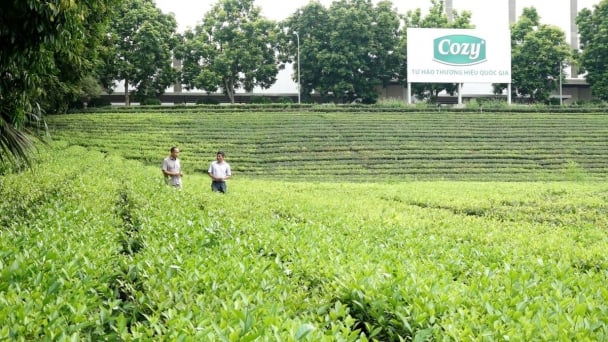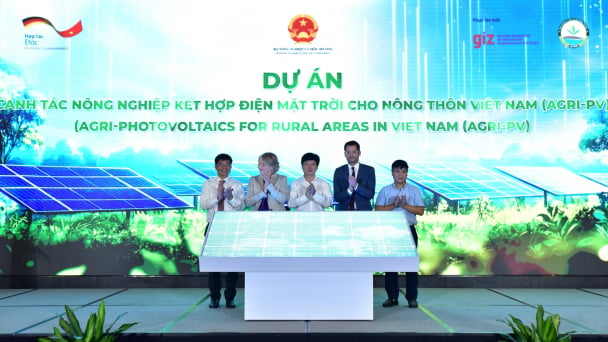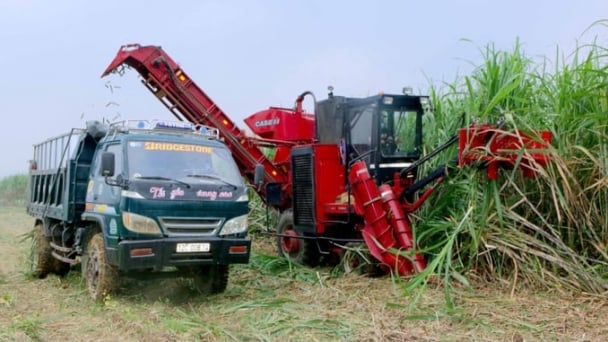September 12, 2025 | 06:42 GMT +7
September 12, 2025 | 06:42 GMT +7
Hotline: 0913.378.918
September 12, 2025 | 06:42 GMT +7
Hotline: 0913.378.918

Acting Minister Tran Duc Thang: "The Ministry of Agriculture and Environment has just appointed 5 more agricultural counselors to support the export of agricultural, forestry, and fishery products, including rice." Photo: Bao Thang.
The simultaneous suspension of rice imports by the Philippines and Indonesia from early September 2025 caused short-term market fluctuations. However, many voices from businesses and associations reassured that the impact is not too severe. Vietnam’s production-consumption chain is still operating, national reserves have been promptly mobilized, and other markets are beginning to open.
“As long as farmers have rice, we will buy. People do not need to worry about selling their paddy,” said Bui Thi Thanh Tam, Chairwoman of Vinafood1, at a meeting with the Ministry of Agriculture and Environment (MAE) on the morning of September 11. The figure of hundreds of thousands of tons in stock, as she mentioned, serves as a safety buffer, showing that this state-owned enterprise has been continuously stockpiling and purchasing rice from farmers to secure supply and stabilize prices.
What worries Mrs. Tam most is not market demand but the cash flow bottleneck caused by the VAT refund mechanism since July 1. Exporters are now dependent on traders to fulfill tax obligations, but, as she frankly noted, “no one knows the financial health of traders.”
In the South, Tran Tan Duc, Member of the Board of Directors of the Southern Food Corporation, painted a more nuanced picture. He said that after prices dropped by more than VND 1,000/kg when the Philippines and Indonesia announced their suspension, they rebounded by about VND 500/kg thanks to renewed imports from Africa and the activation of national reserves.

Deputy Minister Tran Thanh Nam: "Enterprises and farmers need to proactively establish production linkages." Photo: Bao Thang.
By September 11, the highest recorded price for high-quality paddy had surpassed VND 6,000/kg, while regular paddy hovered around VND 5,000/kg. “National reserve procurement is crucial as it can push prices up almost instantly,” Mr. Duc emphasized. Nonetheless, he acknowledged that the Philippines remains a key market that cannot be immediately replaced in the short term.
After the “sudden brake” from the Philippines, regulators and businesses focused on immediate market access and reorganizing production to withstand future market swings. Deputy Minister Tran Thanh Nam stressed the dual goals of maintaining domestic food security and sustaining export value, with the principle of demand-driven production, strong linkages, and cost reduction to increase competitiveness.
According to the seasonal schedule, the summer-autumn crop is basically completed by mid-September, while the autumn-winter crop will be harvested mainly in November and December. The key requirement is “no localized congestion” when paddy floods into mills and warehouses, while maintaining a high-quality rice structure as the foundation for both domestic and export markets.

Nguyen Thi Thu Huong, Sales Director of Chon Chinh Company in Dong Thap, proposed that the Ministry of Agriculture and Environment send a diplomatic note requesting permission to export rice contracts with L/Cs opened and deposits made before August 6, in order to clear inventory for enterprises. Photo: Bao Thang.
Progress and output data from the National Authority for Agro-Forestry-Fishery Quality, Processing and Market Development (NAFIQPM) support this argument. By the end of August 2025, 3.13 million hectares (20.52 million tons) had been harvested nationwide, with the remainder concentrated in the autumn-winter crop in the South covering more than 708,000 hectares. This creates room for smooth adjustment if the linkage chain operates effectively.
The focal point of linkage is the 1-million-hectare high-quality, low-emission rice program in the Mekong Delta. According to Deputy Minister Nam, 11 provinces have registered about 320,000 hectares. This model helps increase yields by 5–10% and reduce costs by 10–20%.
Linkage is not limited to off-take contracts. It must also involve investment in post-harvest infrastructure such as specialized paddy and rice warehouses, standardized milling and processing lines, and preservation technology to extend the shelf life of raw materials and allow flexible selling schedules. The NAFIQPM recommended that enterprises accelerate the upgrading of these links, as even a few weeks’ delay in completing warehouses or mills could choke the chain right when the autumn-winter crop peaks.
With adequate infrastructure, businesses can strategically stockpile and wait for more favorable prices and orders instead of rushing to sell under capital turnover pressure. Domestic price data in recent days show that the supply-demand foundation remains intact and the “flow” of rice persists across many segments, especially high-quality rice, provided that the linkage chain maintains synchronized purchasing, milling, and delivery according to the crop schedule.

Huynh Tan Dat, Director General of the Plant Production and Protection Department. Photo: Bao Thang.
While linkage is seen as a “shield” to cushion short-term shocks, many opinions at the September 11 meeting emphasized that Vietnamese rice needs a broader vision, leveraging seasonal advantages and building a national strategy strong enough to lead the market.
Huynh Tan Dat, Director General of the Plant Production and Protection Department, stated that rice output is expected to reach an additional 13.8 million tons in the last four months of the year. The autumn-winter crop alone, a unique season for Vietnam, contributes about 6 million tons to the Mekong Delta.
This perspective aligns with that of Le Thanh Tung, Secretary General of the Vietnam Rice Sector Association (VIETRISA) and former Deputy Director of the Department of Crop Production. Mr. Tung sees the autumn-winter crop as the key to Vietnam's avoidance of import suspensions like the one from the Philippines.
With stable rice quality and well-controlled main varieties such as Dai Thom 8 and OM18, Vietnam can fully take the initiative in supply, avoiding dependence on the winter-spring crop, which often coincides with the Philippines’ peak buying season.

Le Thanh Tung, Secretary General of the Vietnam Rice Industry Association. Photo: Bao Thang.
Concluding the meeting, Acting Minister Tran Duc Thang assessed that in the short term, the Philippines’ suspension of rice imports has not significantly affected exports. However, the MAE will report to the Prime Minister to direct banks to apply preferential credit policies, support businesses in debt restructuring, and promptly resolve VAT refund bottlenecks.
The final message from the MAE leader is that Vietnam’s rice market needs quick responses in the short term and long-term strategies. On one hand, removing obstacles in credit, taxes, and trade promotion will allow businesses to sustain export momentum. On the other hand, leveraging the autumn-winter crop, expanding new markets, and restructuring production will ensure farmers remain profitable and confident. Only then can Vietnamese rice truly enter a sustainable trajectory.
* $1 = VND 26.482 - Source: Vietcombank.
Translated by Huong Giang
/2025/09/11/3558-1-121751_813.jpg)
(VAN) African swine fever has caused unprecedented challenges, but it also serves as a reminder of the importance of building a sustainable and responsible livestock industry.

(VAN) affirmed that Vietnam’s AVAC ASF LIVE vaccine is highly effective, raising hopes for the recovery of the country’s pig farming sector.

(VAN) Mr. Doan Anh Tuan, Director of The New Generation Co., Ltd also founder of the Cozy tea brand, is among the first pioneers of organic tea production in Vietnam.

(VAN) The Vietnam-Germany agricultural photovoltaics cooperation project promotes energy transition, green and sustainable agricultural transformation.
/2025/09/09/2930-3-152452_634.jpg)
(VAN) Acting Minister Tran Duc Thang welcomed the Oregon House of Representatives delegation to discuss cooperation on agriculture and environment, trade promotion, and resource management.

(VAN) The 2024–2025 sugarcane season has seen strong harvests and favourable prices in many regions, yet paradoxically the domestic market continues to face pressure from imported sugar.